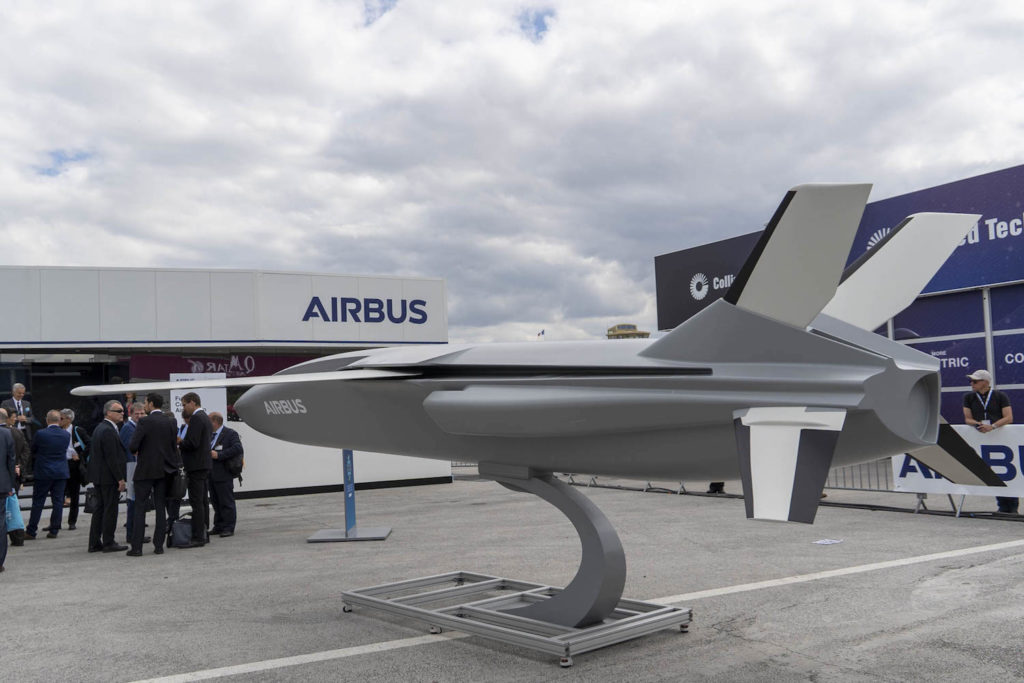
At the 2019 Paris Air Show, Dassault Aviation showed a mockup of the FCAS sixth generation fighter jet for the first time publicly. Photo: ANSYS
A new partnership between ANSYS and Airbus Defense and Space will develop a new artificial intelligence design tool to create the embedded flight control software for Europe’s Future Combat Air System (FCAS).
FCAS is a next-generation air combat development program involving France, Germany and now Spain to develop a system of fully automated remote air platforms and sixth-generation fighters that will replace the current generation of Eurofighter and Rafale jets operated by those three countries. Dassault and Airbus are the lead prime manufacturers for the FCAS program.
A mockup of the future FCAS stealth fighter concept was shown publicly for the first time during the 2019 Paris Air Show.
Airbus first established early development plans for the platform through a partnership with Dassault Aviation at the 2018 Berlin Air Show. Thus far, FCAS program leadership has provided early high level program requirements to include the use of manned-unmanned aircraft teaming, surveillance data fusion and a new generation of satellites to provide networked sensing and data communications.

A mockup of the FCAS next generation fighter jet at the 2019 Paris Air Show. Photo: ANSYS
Through its new flight control software development partnership, Airbus has confirmed plans to create a new version of the ANSYS SCADE aerospace systems simulation software configuration, too. The upgraded version of the tool will use artificial intelligence algorithms as a replacement for traditional model-based systems development.
Eric Bantegnie, vice president of simulation systems for ANSYS, told Avionics International the coding behind the flight control software will be much different from the traditional read-write-compute outcomes of software developed using a model-based systems approach.
“What’s being targeted is the ability to coordinate a fighter jet navigation with a number of UAVs in a swarming mode,” said Bantegnie. “The envelope of flight used by those drones is going to be much more advanced than what is featured on modern commercial or military flight control systems. AI algorithms inside the embedded flight control software will give the drones new maneuvers to not only fly on their own, but to fly in a way that they’re safely in sync with the fighter jet they’re teamed with.”
Bantegnie said the two primary potential uses of artificial intelligence within aircraft systems that provide the nearest term application opportunities are the use of AI for aircraft camera image and pattern recognition.
One of the major differences between using model-based systems development for manned aircraft flight control software and an AI-based development flow software will be the absence of high level requirements from non-software developers, which is typical of most modern safety critical flight control software development programs, according to Bantegnie.
Most of the academic and industry research behind the use of AI for software development currently involves the use of convolutional neural network (CNN) input and output layers, he said.